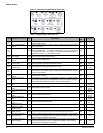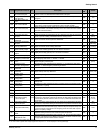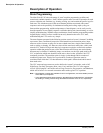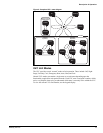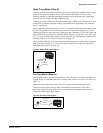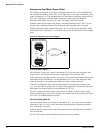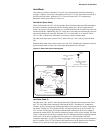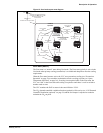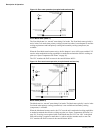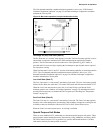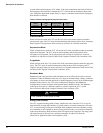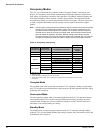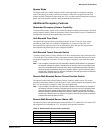
18 McQuay OM 751
Description of Operation
Note – The OAD is considered to be in “alarm” when the OAD is forced below the active minimum
position in the Low Limit state. This is not an actual unit “alarm” or “fault” condition, but
only a condition used for the purpose of transition arguments.
Low Limit State (State E)
The Low Limit state is a “non-normal” state the UVC can go into while Heat mode is active
when the unit reaches 100% heating and still cannot meet the current DATS (see “Discharge
Air Temperature Control” on page 29) required to maintain the effective heating set point (see
“Space Temperature Set Points” on page 26). This is likely to occur only if the OA
temperature is very cold, the OA damper minimum position is set too high, the unit ventilator
is oversized for the application, or if the electric heating has failed, or is set incorrectly.
When the Low Limit state becomes active, the Low Limit PI-loop can override the OA
damper position (see “Outdoor Air Damper Operation” on page 32) and adjust the OA damper
toward closed as necessary to maintain the current DATS (see “Discharge Air Temperature
Control” on page 29).
Cant Heat State (State B)
The Cant Heat state is a “non-normal” state the UVC can go to when Heat mode is active. An
IAT or DAT sensor fault during the Heat mode causes the UVC to make this state active.
When the Cant Heat state becomes active, no heating or ventilation takes place. The OA
damper goes to the minimum position unless it is forced closed by other functions such as
freezestat (T6) or morning warm-up.
Cool Mode (Super State)
When in Cool mode the UVC uses primary cooling (economizer) and secondary cooling
(mechanical, DX) as needed to maintain the effective cooling set point (see “Space
Temperature Set Points” on page 26). The keypad/display or network connection can be used
to force the unit into the Cool mode. When the UVC is in Auto mode, it is “normal” for the
UVC to “idle” in Cool mode when there is no need to switch to another mode. The Cool mode
super state consists of the following UVC states: Econ Mech [1], Mech [2], Econ [3], DA Heat
[4], Low Limit [F], and Cant Cool [C].
When the Cool mode super state becomes active, the UVC will automatically determine which
UVC state to make active based upon the transitions for each state.
If the space temperature drops below EHS, and the Emergency Heat function is enabled, the
UVC will be forced into the Emergency Heat mode (see “Emergency Heat Mode (Super
State)” on page 16).



